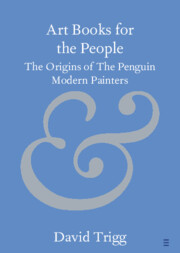Refine search
Actions for selected content:
2 results

Art Books for the People
- The Origins of The Penguin Modern Painters
-
- Published online:
- 22 July 2025
- Print publication:
- 21 August 2025
-
- Element
- Export citation
3 - The Visual Economy of ‘Precious Books’
-
- Book:
- Cosmopolitan Radicalism
- Published online:
- 20 July 2020
- Print publication:
- 06 August 2020, pp 101-131
-
- Chapter
- Export citation
